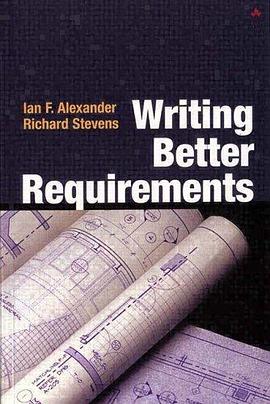
It isn't that they can't see the solution. It is that they can't see the problem. G. K. Chesterton Requirements are essential Requirements are the key to project success. We all know this, but we often forget n and pay the price. Many projects, both in industry and in the public sector, fail to do what is needed. They deliver late, over budget, and poor quality. Missing out on requirements is disastrous. Who this book is for Writing Better Requirements is designed as a short, convenient overview for practising systems engineers and others who find they need to write requirements. Because it is about practical techniques, it should be useful in many different kinds of system and software project. We aim to enable readers to write requirements good enough for successful systems to be specified, designed, and tested against them. This book should also form a useful introduction for students who want to learn how to get started with requirements. What this book does and does not cover This book specifically focuses on how to discover and express requirements. It is not about system specification, nor how to make a design that meets user needs, nor even about how users should ensure their requirements are met.Since users own the requirements, these must be expressed in a way users can understand. This book treats requirements as simple pieces of text, supported by operational scenarios and informal diagrams. Many attempts have been made to improve on these simple means, using more formal structures and notations with varying success. We have not tried to cover all these approaches. To place requirements in context, the book must of course cover some aspects of the development process. Project management, verification, quality assurance, and the development life cycle are all closely linked with requirements n indeed each of these areas is meaningless in isolation. But in this book, we concentrate on the tasks of capturing and writing requirements. Each chapter contains exercises to help readers to practice their skills. We recommend some good books for readers who want to go beyond writing good requirements to other aspects of systems and requirements engineering. Getting the best from this book This book is meant to be read in the order in which it is written, taking the reader through a disciplined process of identifying, gathering, organizing, and reviewing. This is vital for success. Each chapter introduces a stage in the requirements process. Key terms are defined informally, explained, and illustrated with examples and exercises to develop the practical skills of good requirements writing. These skills involve looking at problems, dealing with people, looking critically at what is being written, and reviewing requirements effectively. Reviewing is to some extent a separate skill and can be looked at separately; the others belong together in a more or less strict sequence. Structure of this book We begin by illustrating the importance of requirements. You may need this chapter to convince other people that they have a problem. Too many projects have poor requirements, and never recover. If you are already convinced, you can skip this introductory chapter. We then show in a non-technical way how to define a problem, in close co-operation with the only people who know what the problem is, the users. The body of the book steps through the process, looking at: how to capture requirements from users; how to organize these into a clear message from users to developers; techniques for the special kind of writing needed for requirements; how to review requirements informally at every stage, then formally. Practical Exercises All the chapters in the body of the book contain practical exercises for the reader. These are designed to take about half an hour each. Some are sufficiently open-ended for more extended self-instruction, or student projects. We recommend that readers attempt each exercise, at least briefly, to get an actual feeling for the difficulties involved. At the back of the book are short answers to all the questions, with hints to the reader for more complete projects. Problems before Solutions If the message of this book can be stated in a sentence, it is: Get agreement on what people want, before attempting to create solutions. Finding out what is needed, instead of rushing into presumed solutions, is the key to every aspect of system development. Most technical problems can be solved, given determination, patience, a skilled team n and a good definition of the problem to be solved. Acknowledgements We would like to thank the anonymous reviewers who checked the book so carefully; our wives and families for tolerating us while we wrote; and all our consultancy, training and workshop clients who experienced the material first-hand and showed us the way it needed to be explained. We are specially grateful to Richard Marshall for reading an early draft, and to Professor Ken Jackson for his perceptive and precise comments. 0321131630P05292002
具体描述
读后感
评分
评分
评分
评分
用户评价
相关图书
本站所有内容均为互联网搜索引擎提供的公开搜索信息,本站不存储任何数据与内容,任何内容与数据均与本站无关,如有需要请联系相关搜索引擎包括但不限于百度,google,bing,sogou 等
© 2025 qciss.net All Rights Reserved. 小哈图书下载中心 版权所有





















